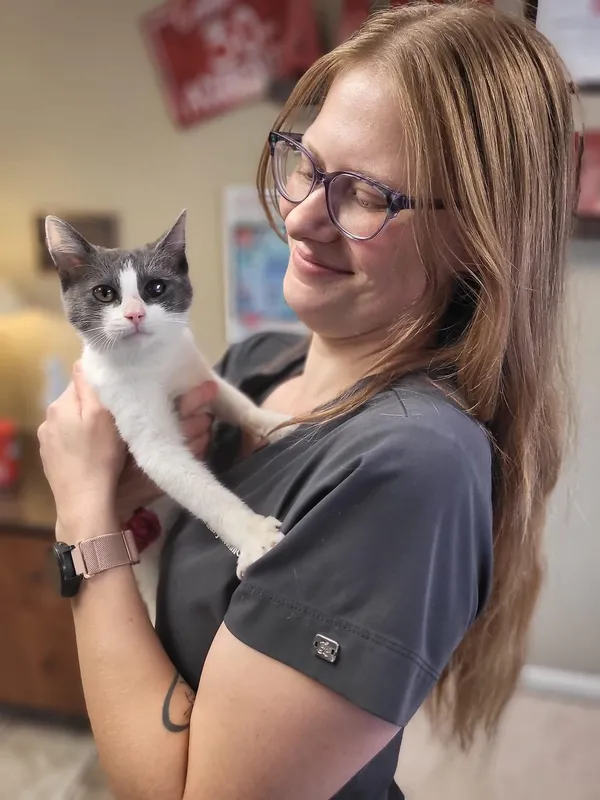No Declawing
Janesville Veterinary Clinic’s Position Statement on Declawing:
The Janesville Veterinary Clinic is taking a stand against declawing! Moving forward, declawing and tendonectomies will be reserved only for those rare cases in which a cat has a medical problem that would warrant surgery, such as the removal of cancerous nail bed tumors.
The Clawful Truth
Too often, people think that declawing is a simple surgery to remove a cat’s nails—the equivalent of having your fingernails trimmed. This is far from the truth, as your cat’s claw is not actually a toenail. It is adhered to the bone. To remove the claw, the last bone of the cat’s toe has to be removed. So declawing is not like a manicure–it is serious surgery!
Potential Long-Term, Adverse Effects of Declawing
The Journal of the American Veterinary Medical Association published a study concluding that declawed cats who live with other cats are three times more likely to fail to use the litter box appropriately than those with intact claws. The same study showed that the cats without claws were three times more likely to experience chronic back pain than their clawed feline friends.
In a study published by the Journal of Feline Medicine, cats who had undergone declawing surgery were more prone to behaviors including aggression and over-grooming.
In a study published by the Journal of Feline Medicine, cats who had undergone declawing surgery were more prone to behaviors including aggression and over-grooming.

Potential Long-Term, Adverse Effects of Declawing
Risk of Infection
Chronic Back Pain
Stop Using Litter Box
Increase in Biting/Aggression
Lameness
Nerve Trauma
Chronic neuropathic pain
Now That We Know Better, Let’s Do Better
With the development of new research, and the evolution of evidence-based veterinary medicine, we have the opportunity to adapt our perceptions and protocols. In our quest to always seek the least invasive and most compassionate kind of veterinary care, declawing is not a practice we can stand behind. Instead:
We Stand with Cats.
Organizations That Oppose Surgical Declawing of Cats Unless Medically Necessary:
American Association of Feline Practitioners
American Association of Feline Practitioners
Alternatives to Declawing
Understand why and where your cat scratches in order to better respond to your cat’s needs AND preserve your furniture, carpet, or doorways. Here are some tips:
Training
Cats can be trained?? Yes, they actually can!Even an older cat can learn new behavior. Encourage and reward your cat’s natural instinct to scratch in appropriate places, like scratching posts or cat trees. If they begin to scratch the furniture, redirect them to the scratching posts and give them praise. Encourage your cat to investigate her post by scenting it with catnip, hanging toys on it, and placing it in areas where she’ll be more inclined to climb.Make the surfaces you don’t want them to scratch as undesirable as possible. Double-sided tape, aluminum foil, or spray deterrents work well to help your cat avoid the places you don’t want them to scratch.
Manicures!
Sometimes, your pet scratches furniture and other surfaces because something about their nails is bothering them. Think of your furniture like an expensive emery board!Keep your cat’s nails trimmed every 1-2 weeks so they are less inclined to sharpen or grind down their nails themselves. Invest in a good pair of cat nail trimmers and learn how to clip your pet’s nails. If you feel unsure, ask us in your cat’s next wellness exam, and we’ll be happy to demonstrate for you!
Other Methods
Many other strategies can help deter your cat from scratching your valuable things! For example, Feliway is a synthetic pheromone that can deter scratching, and it comes in a spray or an air diffuser. For more information, check out this resource from the American Association of Feline Practitioners.
